Assessments under the Workers Compensation NSW, Workers Compensation Scheme are in accordance with the protocol provided by the American Medical Association (AMA 5th Edition) and the Work Cover guides for the evaluation of permanent impairment.
A worker who has sustained an injury during the course of their employment where employment is considered as the substantial contributing factor to the injury, is entitled to a lump sum benefit if they satisfy the required threshold impairment level of 11% WPI.
There are primary injuries and secondary injuries. Primary injuries include the specific injured body parts which had resulted from the work incident or due to the nature and conditions of employment. Secondary are those injuries which develop subsequently and not necessarily at the time of the injury.
Instances of secondary injury include but are not limited to the following;
Overuse of an opposite arm or opposite leg to favour the injured leg or injured arm. This is a common secondary injuries involving the overuse of limbs to support an injured body part.
Example:-
If there is an injury to the left shoulder and to over compensate for that injured left shoulder an individual uses the right arm more frequently. As a result there is an injury of similar nature to the right shoulder. The right shoulder becomes a secondary injury.
In relation to an injured leg, if an injured person has sustained an injury for example to the left knee and as a result overcompensates on the right leg. The injured person may develop similar symptoms and problems to the right knee. The right shoulder becomes a secondary injury.
Injuries to ankles has the similar effect in creating secondary injuries as that of the knees. Again if a worker bares more weight on the right side to overcompensate for an injured left ankle, an injury may be caused to the right leg and not necessarily the right ankle but also the right knee. Obviously, it applies in the reverse.
Body structural changes may affect joints and spinal cord. Following an injury an individual may alter walking style, posture and other bodily movements. As a result, this may create other related problems.
Example:-
Where an injured person has injuries to either or both legs and as a result develops a limp or an altered gate, injuries may be caused to the spinal structure. Due to unevenness of walking style, an injury is caused to the spinal cord, in particularly to the lower region being the lumbar spine. The lower back will form as a secondary injury.
Limping can also create problems to the pelvis region/ hip area of an individual. Over extended periods of constant limping structural injuries may be caused to either hip or both hips. The hip will form as a secondary injury.
An individual may sit or sleep in a pattern to avoid discomfort and pain to lower back. The altering of posture may effect spinal structure and lead to similar problems to the neck. The neck will form as a secondary injury.
Treatment of an injury may in some circumstances lead to other injuries or health problems.
Example
If a worker has a hernia injury and has surgical procedure for the repair of the hernia and as a consequence of the surgical procedure there is organ damage or nerve damage. The injured organ or the nervous system are considered secondary injuries.
The consumption of medication including any anti-inflammatory and pain killers for the treatment and control of the work related injury, a worker develops gastrological problems. The gastrological problems become a secondary injury.
Following surgical procedure of a work injury surgical scarring may develop. Scarring is assessable as an impairment and is considered a secondary injury to the primary injury.
Following an injury an individual may be forced to change of lifestyle as their physical injuries prevent them from participating in sport and recreational activity.
Example
Various physical injuries may cause an injured person to become sedentary in their lifestyle. An injured person may not exercise or participate in physical activities as they were able to do prior to an injury. As a result of this, excessive weight gain results and in sometimes obesity.
A sedentary lifestyle and become overweight or obese is a contributor to type 2 diabetes.
In limited situations where an injured person does develop diabetes, it may be associated from the original injury. Diabetes becomes a secondary injury. The development of diabetes falls under the endocrine system and is an assessable injury therefore increasing the level of impairment.
There are various body systems which are assessed under the AMA 5th Edition and the Work Cover Guide to the evaluation of permanent impairment. Injuries relating to an injured body system may lead to further assessable impairments within a different body system.
Examples: –
HEAD INJURY
Primary injury – Disturbances in a level of consciousness and/or awareness. This injury is assessable by a Neurologist or neurosurgeon.
Secondary injuries – Loss of hearing, loss of smell, loss of taste, altered and loss of vision. These secondary injuries are assessable by an Ear Nose & Throat Surgeon.
Body systems affecting other body parts may also add to the level of impairment.
Examples: –
SPINAL INJURIES
Cervical spine (neck)
Symptoms to both upper limbs where there has been loss of grip, numbness and pains to one or both of the arms. This results from nerve injury to the neck region.
Thoracic spine (upper back)
Thoracic spine injuries do have referring symptoms and impairments to both of the arms in extreme cases, where nerve damage has occurred.
Lumbar Spine (lower back)
Referring pain or numbness to both of the legs. Such referring pain will add to the level of impairment.
Neurological problems and this includes loss of sexual function and Cauda Equina involving the loss of bowel control due to nerve damage to the lumbar spine region.

